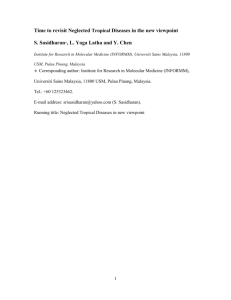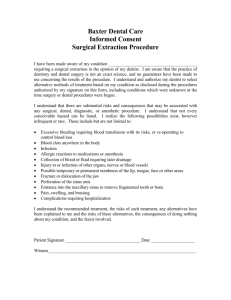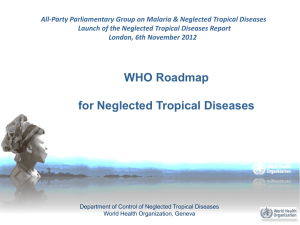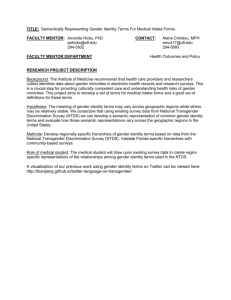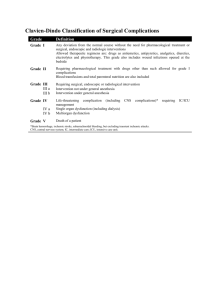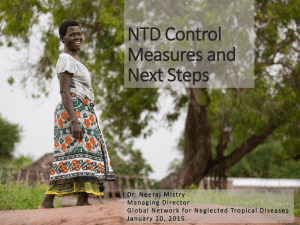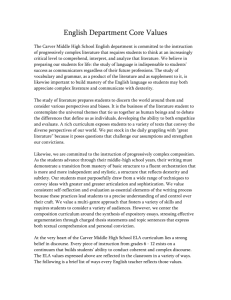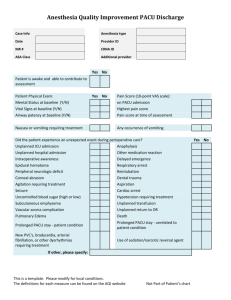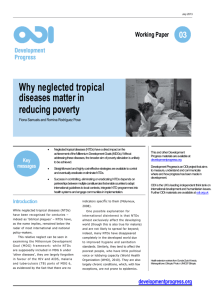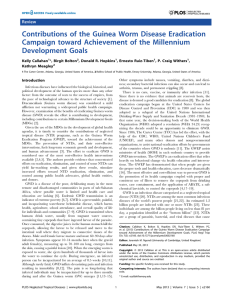metadata analysis
advertisement
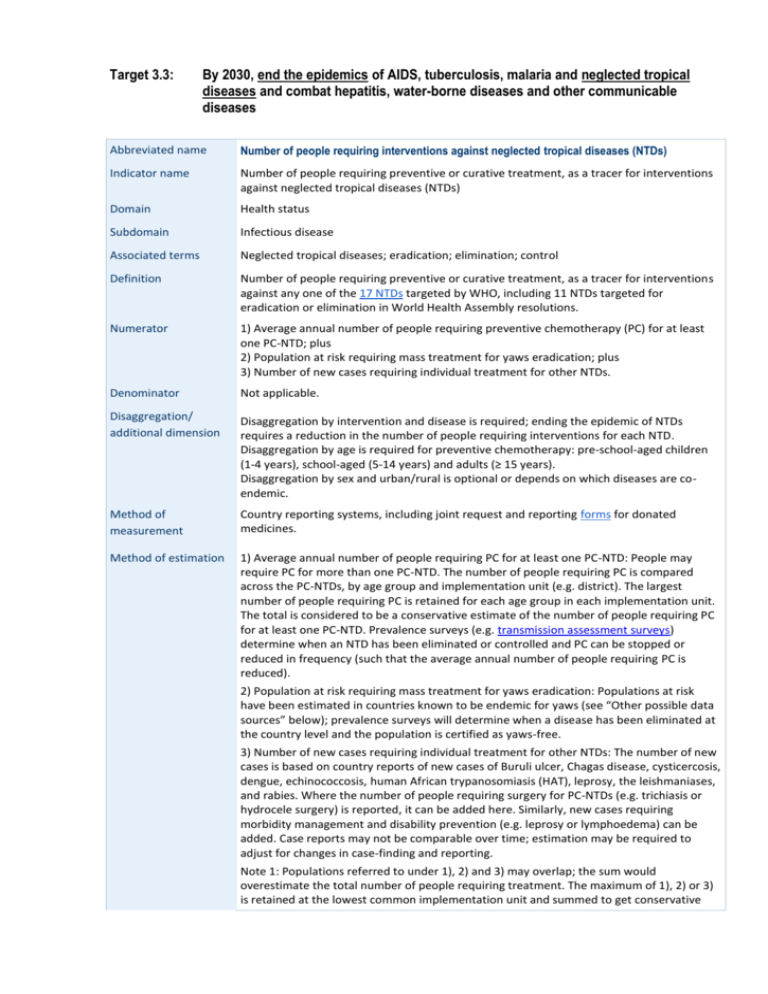
Target 3.3: By 2030, end the epidemics of AIDS, tuberculosis, malaria and neglected tropical diseases and combat hepatitis, water-borne diseases and other communicable diseases Abbreviated name Number of people requiring interventions against neglected tropical diseases (NTDs) Indicator name Number of people requiring preventive or curative treatment, as a tracer for interventions against neglected tropical diseases (NTDs) Domain Health status Subdomain Infectious disease Associated terms Neglected tropical diseases; eradication; elimination; control Definition Number of people requiring preventive or curative treatment, as a tracer for interventions against any one of the 17 NTDs targeted by WHO, including 11 NTDs targeted for eradication or elimination in World Health Assembly resolutions. Numerator 1) Average annual number of people requiring preventive chemotherapy (PC) for at least one PC-NTD; plus 2) Population at risk requiring mass treatment for yaws eradication; plus 3) Number of new cases requiring individual treatment for other NTDs. Denominator Not applicable. Disaggregation/ additional dimension Disaggregation by intervention and disease is required; ending the epidemic of NTDs requires a reduction in the number of people requiring interventions for each NTD. Disaggregation by age is required for preventive chemotherapy: pre-school-aged children (1-4 years), school-aged (5-14 years) and adults (≥ 15 years). Disaggregation by sex and urban/rural is optional or depends on which diseases are coendemic. Method of measurement Country reporting systems, including joint request and reporting forms for donated medicines. Method of estimation 1) Average annual number of people requiring PC for at least one PC-NTD: People may require PC for more than one PC-NTD. The number of people requiring PC is compared across the PC-NTDs, by age group and implementation unit (e.g. district). The largest number of people requiring PC is retained for each age group in each implementation unit. The total is considered to be a conservative estimate of the number of people requiring PC for at least one PC-NTD. Prevalence surveys (e.g. transmission assessment surveys) determine when an NTD has been eliminated or controlled and PC can be stopped or reduced in frequency (such that the average annual number of people requiring PC is reduced). 2) Population at risk requiring mass treatment for yaws eradication: Populations at risk have been estimated in countries known to be endemic for yaws (see “Other possible data sources” below); prevalence surveys will determine when a disease has been eliminated at the country level and the population is certified as yaws-free. 3) Number of new cases requiring individual treatment for other NTDs: The number of new cases is based on country reports of new cases of Buruli ulcer, Chagas disease, cysticercosis, dengue, echinococcosis, human African trypanosomiasis (HAT), leprosy, the leishmaniases, and rabies. Where the number of people requiring surgery for PC-NTDs (e.g. trichiasis or hydrocele surgery) is reported, it can be added here. Similarly, new cases requiring morbidity management and disability prevention (e.g. leprosy or lymphoedema) can be added. Case reports may not be comparable over time; estimation may be required to adjust for changes in case-finding and reporting. Note 1: Populations referred to under 1), 2) and 3) may overlap; the sum would overestimate the total number of people requiring treatment. The maximum of 1), 2) or 3) is retained at the lowest common implementation unit and summed to get conservative country, regional and global aggregates. By 2030, improved co-endemicity data and models will validate the trends obtained using this simplified approach. Note 2: The target for eradication of dracunculiasis remains 2015; it is not included in this indicator for the 2030 target. Measurement frequency Annual Monitoring and evaluation framework Impact Preferred data sources Global Health Observatory. Preventive chemotherapy databank. Other possible data sources Atlas of human African trypanosomiasis. Weekly epidemiological record (Chagas disease). Regional databases (dengue). Systematic reviews (yaws). Further information and related links Global plan to combat neglected tropical diseases, 2008–2015. Geneva: World Health Organization; 2007 (http://whqlibdoc.who.int/hq/2007/who_cds_ntd_2007.3_eng.pdf, accessed 29 March 2015). Accelerating work to overcome the global impact of neglected tropical diseases. Geneva: World Health Organization; 2012 (http://www.who.int/neglected_diseases/NTD_RoadMap_2012_Fullversion.pdf, accessed 29 March 2015). Investing to overcome the global impact of neglected tropical diseases. Geneva: World Health Organization; 2015 (http://www.who.int/neglected_diseases/9789241564861/en/, accessed 29 March 2015). World Health Assembly governing body documentation: official records. Geneva: World Health Organization (http://apps.who.int/gb/or/, accessed 29 March 2015).

